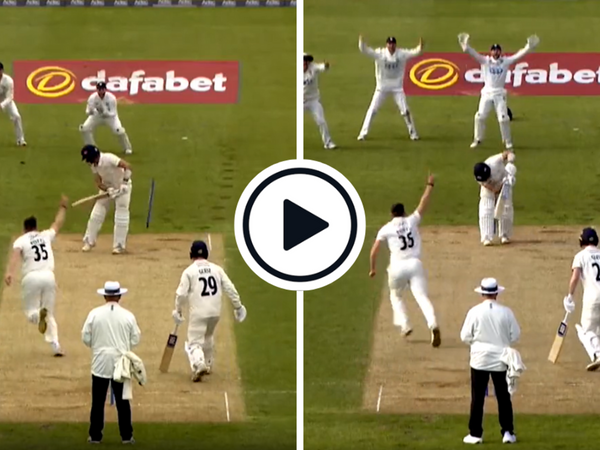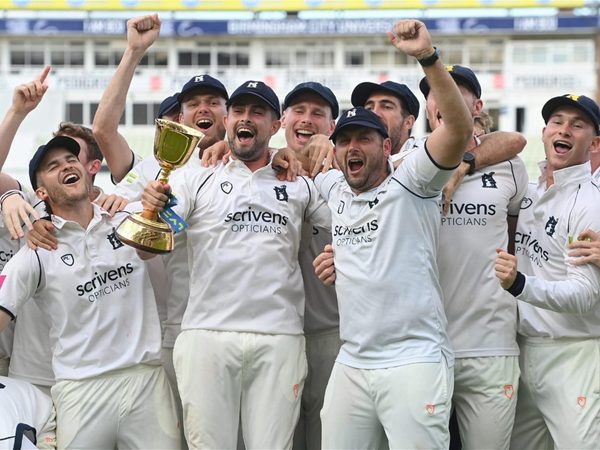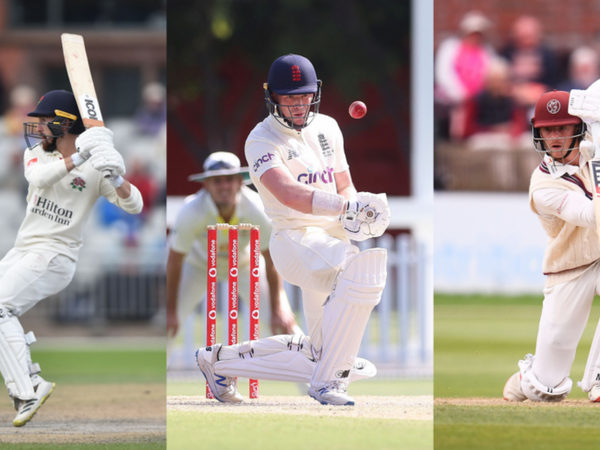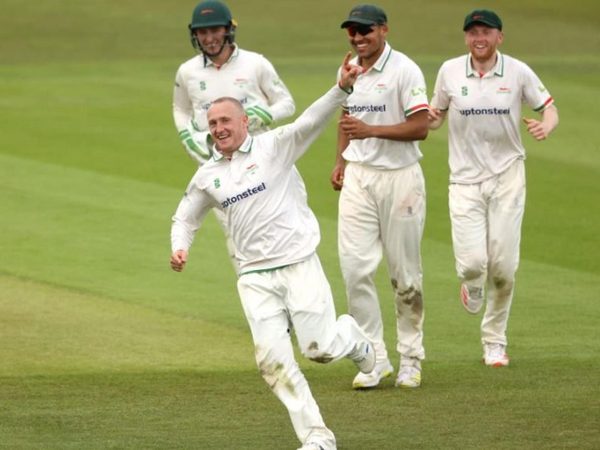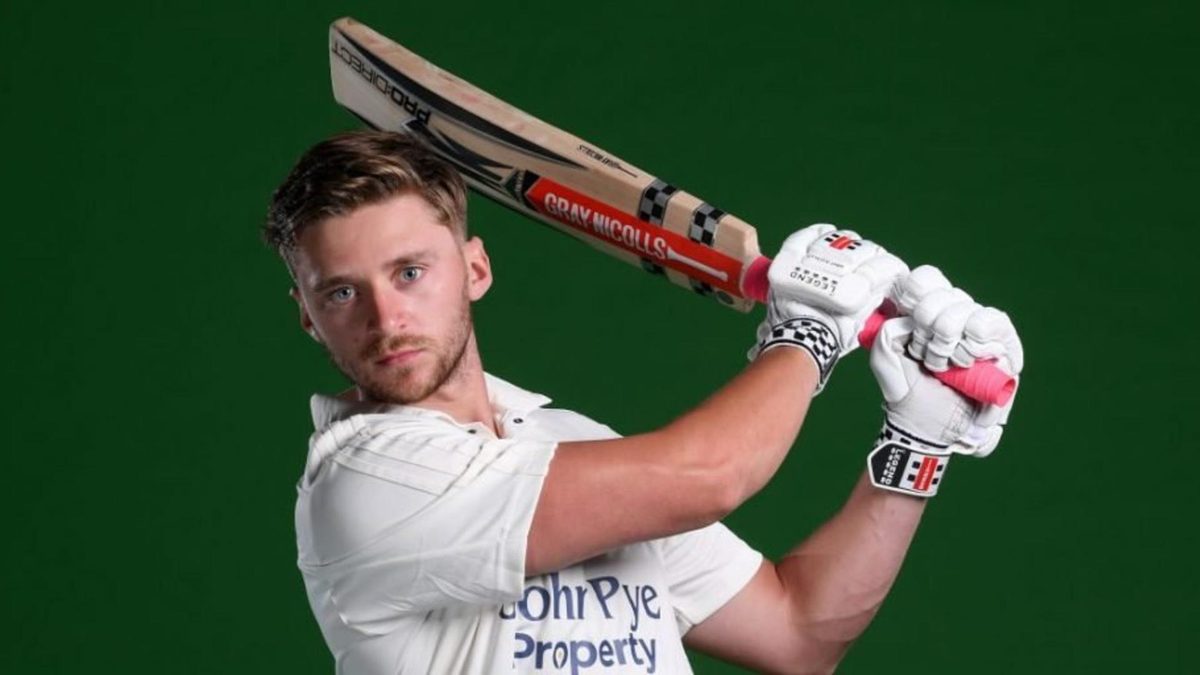
Joe Clarke has long been tipped for the top. Three years on from the moment he came close to a Test debut, Yas Rana looks at where the young strokemaker is at now.
In August 2018, Joe Clarke appeared on the verge of becoming a Test cricketer. At 22 he was already an England Lions veteran, had 12 first-class hundreds to his name and was averaging just shy of 45 in Division One of that year’s County Championship. He was not unfairly compared to Joe Root. Stylistically, the pair were, and still are, very similar, but so too were their achievements at comparable ages. If anything, Clarke was marginally ahead. Root debuted for England Lions at 20, Clarke at 19. Root scored four first-class hundreds before his 22nd birthday; Clarke had nine.
When Dawid Malan’s first tenure in the Test side approached its conclusion, Clarke was the obvious next man in. Instead, Ollie Pope, a 20-year-old rookie in his first full season as a first-class cricketer, was given the gig for the Lord’s Test. Three years later, Clarke has still never played for England.
To say that the last three years of Clarke’s life have been complicated would be a misrepresentative understatement. In January 2019, Clarke was a central figure in a court case that preceded the imprisonment of his best friend, former Worcestershire player Alex Hepburn. During the trial, the court heard that Clarke, Hepburn and Tom Kohler-Cadmore were members of a “stat chat” WhatsApp group where the trio discussed a game described by the defence counsel as “basically a contest as to who could sleep with the most women.”
Clarke (and Kohler-Cadmore) was subsequently stood down from England Lions duty, charged with bringing the game into disrepute and banned for four matches.
It’s impossible to know how the trial, and the events that lead up to it, truly affected Clarke. In 2020, he told ESPNcricinfothat he thought about it every day and that it played on his mind while he batted. Not exactly unbridled repentance, but a clearly a disrupted mind. Batting, a discipline that requires total control of mind and body, is hard enough as it is – it is easy to imagine how that ugly chapter in his life could have negatively affected his performance.
Three years on from his Lord’s omission, there is still little doubt over his ability. In fact, it has long been cliché to describe Clarke as the ‘most talented uncapped batter in England’, which, when you think about it, is an impressive moniker to have run dry by 25.
He is still broadly in the England reckoning, but the format in which he is closest to winning that elusive first England call-up would have surprised people three years ago. His first-class game had, until 2021, stagnated, but he is now a T20 batter with a burgeoning reputation worldwide, attracting interest from the Big Bash and Pakistan Super League. Peter Moores, Clarke’s Nottinghamshire coach, reckons he’s already got the game for T20I cricket and the numbers back him up. Of players to appear in 50 or more T20 matches, Clarke has the sixth-highest strike-rate of all time (155.62), a number accompanied by a healthy average marginally below 30.
That career arc – where development against the white ball has outpaced improvement against the red – feels emblematic of the paths currently traversed by the country’s best young batters. And when England have tried so many batters in Test cricket over the last few years, it also begs the question as to how a talent like Clarke hasn’t been one of them.
So first to that T20 improvement: what has he done to advance his case in the shorter formats? According to Moores, it’s all about tempo. “He’s found a lovely tempo to his swing and it’s allowed him to attack down the ground,” the former England head coach told Wisden.com in August. “The tempo of his swing means that if there’s a mix of pace, he can still get onto it. He’s got immense power as a player, he can nearly mishit the ball now for six because that rhythm is so good. He’s found a rhythm and a timing to his swing that has kept the power that he generates right at the top level, he puts bowlers under a huge amount of pressure especially in those first six overs.
“If you watch a golf swing that has a lovely rhythm or tempo, it’s smooth isn’t it? If you watch someone who’s not as accomplished a player, often it looks quite rushed, they snatch it. He swings through easy now and that [gives him] access for hitting straight down the ground as well as cutting the ball and hitting the ball over mid-wicket.”
Six years after his second spell as England coach came to an end, Moores is still an important figure in English cricket, presiding over the development of three of the country’s most exciting young batting talents in Clarke, Ben Duckett and Haseeb Hameed – all of whom had lost their way to varying degrees over the past few years, and all of whom have made noticeable improvements under Moores’ tutelage.
Moores’ love of batting is infectious and evident. He is an evangelical about the importance of “rhythm” and “tempo” – it makes sense that Root is said to enjoy working with him – and is an advocate for developing a technique that is easily suited to all formats. “The difference between red-ball and white-ball batting; with white-ball batting you can go and meet the ball as a batter,” added Moores.
“You can find the ball and hit it. In red-ball, you tend to let the ball come to you. Part of red-ball batting is the ability to score runs, yes, but also to be able to keep out the really good ones. [Clarke] has adjusted a few things to try and make sure that he accesses what is a really strong shot for him, through straight mid-wicket, through the leg-side. It’s been an area he’s been working on quite hard over the last six to eight months of making sure he keeps it really simple and can play in areas that he knows he’s strong.
“I think we’ve seen quite a lot of progression over the last three months. It hasn’t quite translated fully into bigger [red-ball] scores at this level which you’ll need to get, but he’s on a nice journey, I’d say, to get to that point where his game needs to be, where if he goes into England, he can make a difference. It’s not just about playing, it’s about going in there and becoming an established player who can perform at that level.”
Moores’ last point – that he is trying to get Clarke’s game to a place where it can thrive in international cricket, not just county cricket – is an interesting one. Sometimes in county cricket you get the impression that players manufacture techniques appropriate for the specific challenges of the county game, challenges that players are unlikely to encounter elsewhere. Someone like Dom Sibley – who attempts to almost entirely eliminate the prospect of an outside edge to the cordon – has engineered a technique to aid survival on difficult English wickets. Unless a player has the luxury of playing at a ground like The Oval, they are unlikely to come across many surfaces that are replicated in Test cricket; across Nottinghamshire’s 14 first-class matches this summer, there were just three team totals that reached the 400-mark across.
Clarke had a weird red-ball season. He got in time and time again – only Tom Haines and Matt Critchley passed 50 on more occasions in the County Championship – but generally failed to make the most of those starts. He fell between 50 and 67 seven times this summer. It is interesting to compare his season against Pope’s, the man picked ahead of him in 2018. Pope reached fifty three times in 13 innings, going on make scores of 245*, 131 and 274. Clarke struck half-centuries eight times in 22 innings but hit just one century. On, broadly speaking, trickier surfaces, Clarke got to 50 more often but failed to cash in.
When you watch him play and those those movements are in sync, you do wonder how he’s not made the leap up to international cricket yet. Quite simply, he looks a cut above almost every batter in the county game – he naturally times the ball well and has enough shots in his repertoire to punish the rubbish. His final-round 109 against Yorkshire, achieved on a pitch so green that it was genuinely indiscernible from the adjacent outfield, was an utter delight to watch, pouncing on anything too wide and too straight – it was an apt reminder of why those earlier Root comparisons were justified.
Has his development been hampered by switching between formats? As referenced earlier, he’s hardly alone among young English batters progressing further in white-ball cricket. How feasible is it for young batters like Clarke to simultaneously make sufficient progress in multiple formats? After all, it was hard enough developing into a good Test cricketer before the existence of T20 cricket and the format’s recent, more pronounced divergence from the others.
“I think that’s been tough,” Moores explains. “The closer a player can get his game down to the same sort of shots in all three formats, the easier it is to keep changing over. Someone like Joe Root is a great example. You can see the shots he plays, they’re used in all three formats. He will create more of those shots in the shorter formats because of the rate, he needs to go faster.
“The goal for me as a coach is that you’re trying to get one technique for all formats. The method, the intensity, the tempo they play at might change but you don’t want to change too many things otherwise it becomes quite difficult. I think English players, more than from any other country, are used to swapping codes. This year we played four-day games in the middle of the T20 Blast which is really challenging for a batter. I think it’s more challenging for batters than bowlers.”
There are fewer and fewer all-format batting superstars. Only half of the top 20 ranked Test batters are regulars in their side’s T20I teams; to be be knocking on England’s doors in all three formats is a commendable achievement in itself, even if it’s not quite what Clarke would have expected to achieve at this point in his career. Clarke has recently shown, in T20 cricket at least, that he can make sizeable strides in a short space of time; he may only be a small step from being the England batter he has long threatened to be.

